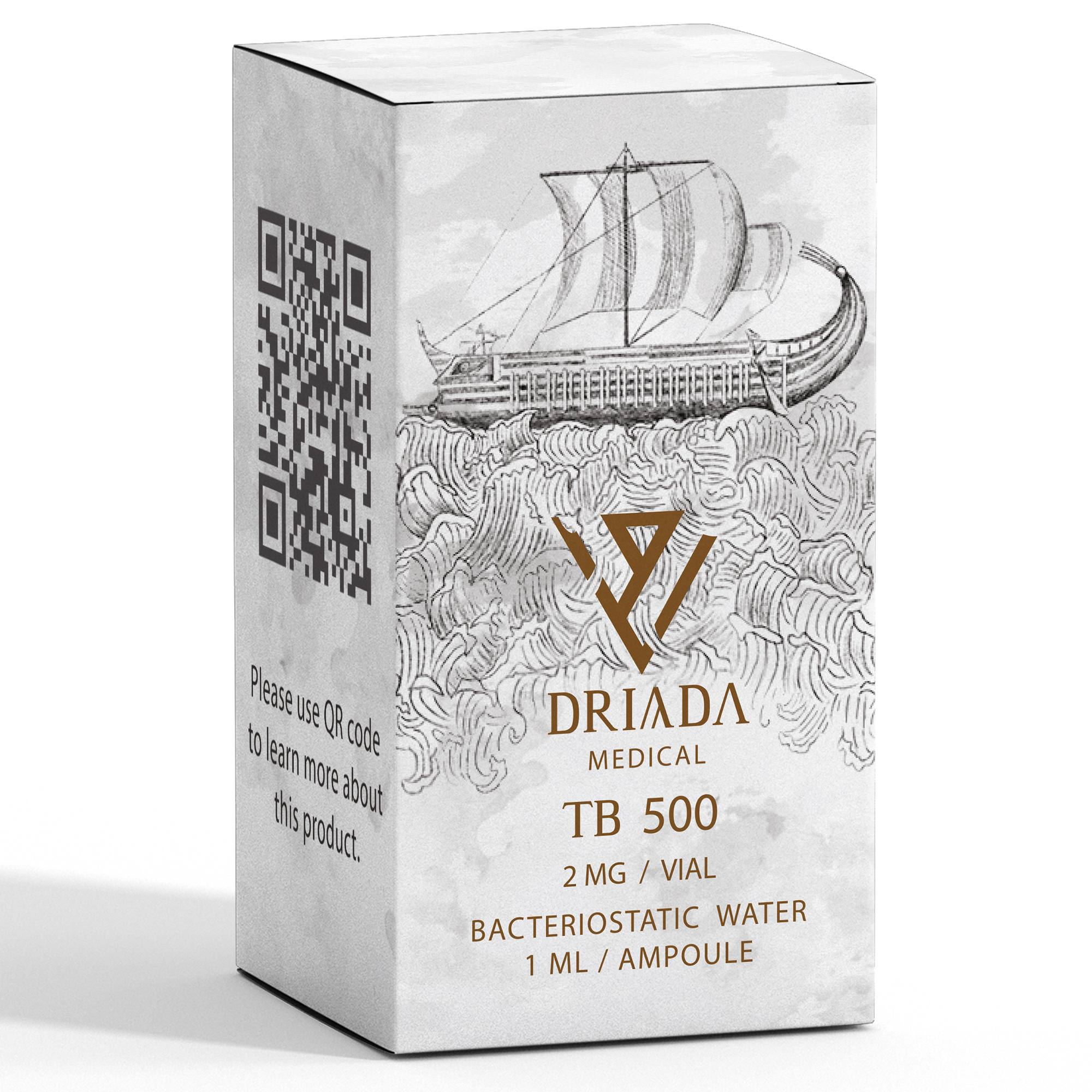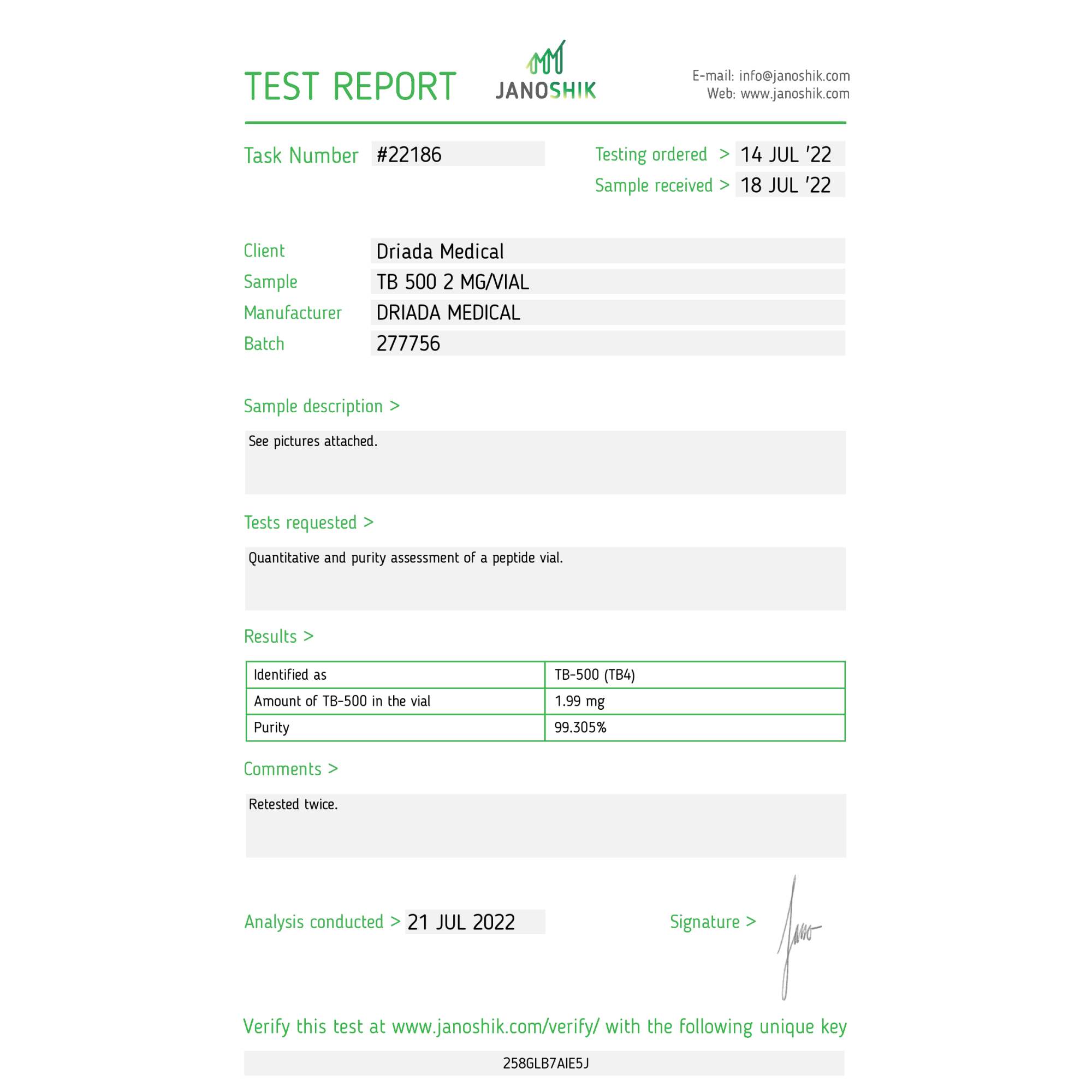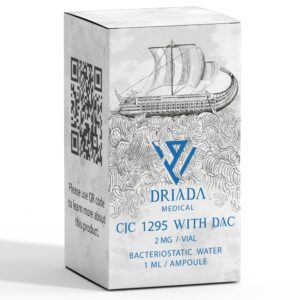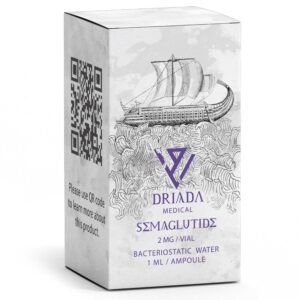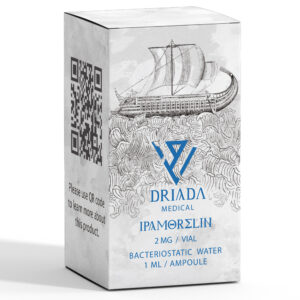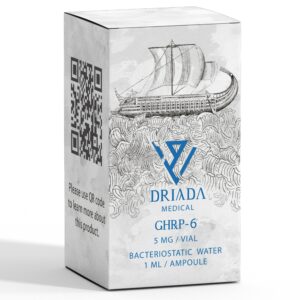Description
Thymosins are small proteins found in many animal tissues. They are named so because they were originally isolated from the thymus, but most of them are now known to be present in many other tissues. Thymosins have a variety of biological activities, and two thymosins α1 and β4 in particular, have potentially important medical applications, some of which are already being used in clinics rather than laboratories.
TB-500 is a short peptide or fragment of the naturally occurring hormone Thymosin Beta 4. TB-500 is not Thymosin Beta 4, although it is often sold under that name. In the body, Thymosin Beta 4 is released by the thymus, a gland that is most prominent in children, atrophies in adulthood, and is virtually absent in the elderly. It is also produced locally in various cells, and in particular, is found in wound discharge, as well as in a fairly high concentration in the cypotlasm of some cells. Various studies have found that Thymosin Beta 4 can promote various forms of wound healing by promoting stem cell differentiation as well as reducing inflammation.
The peptide sequence of TB-500 matches the active region of Thymosin Beta 4 and shares many and possibly all of the properties of Thymosin Beta 4 while being more economical to manufacture. TB-500 can be used to promote healing, increase range of motion in the event of a injury, or reduce pain in an injury by reducing inflammation. Currently, TB-500 is of the most interest to athletes and bodybuilders who see it as a way to get faster post-workout recovery. In addition, it is usually considered as an aid in the treatment of sports injuries and as a kind of protection against injuries.
Mechanism of action
Among the thymosis, the Thymosin Beta 4 peptide is considered the most abundant, best studied and probably the most biologically active member of the beta thymosin family. Due to the fact that the Thymosin Beta 4 molecule is an actin-binding peptide, it regulates actin polymerization, and as a result, regulates cell migration, which is important for the process of angiogenesis, regeneration of damaged tissues. It has been repeatedly shown in various cellular models and at the level of the body that the Thymosin Beta 4 molecule has unique cardiprotective properties, takes part in stimulating angiogenesis under conditions of ischemia of the heart muscle, blocks proapoptotic cascades in cardiomyocytes and, conversely activates intracellular signaling pathways responsible for survival cells under stress. The regenerative potential of the Thymosin Beta 4 molecule is being actively studied in other areas of medicine.
The activity of this molecule is manifested in the treatment of trophic ulcers, wounds and burns of the human cornea. Due to its anti-inflammatory properties, Tr4 has established itself as an active ingredient in preparations for the treatment of signs of skin inflammation- chronic dermatitis. Thymosin Beta 4 also activates the formation and growth of blood vessels (angiogenesis), effects the differentiation of stem cells.
With such a wide range of potentially beneficial activities, it is not surprising that Thymosin Beta 4 is attracting close attention from both drug developers and commercial structures working in the field of cosmetic chemistry, since anti-inflammatory effects, accelerated wound healing and tissue regeneration are key in the restoration of various muscles, including cardiac and anti-aging approaches for example, to stimulate hair growth. Currently the ClinicalTrials.gov database contains 11 Thymosin Beta 4 phase 1-3 clinical trials, of which 6 have been completed.
Injury healing
Thymosin Beta 4 plays a vital role in the repair and regeneration of damaged cells and tissues. Following injury, Thymosin Beta 4 is released by platelets, macrophages and many other cell types to protect cells and tissues from further damage and reduce apopotosis, inflammation and microbial growth. Thymosin Beta 4 binds to actin and promotes cell migration, including the mobilization, migration and differentiation of stem/progenitor cells that form new blood vessels and regenerate tissue. Thymosin Beta 4 also reduces the number of myofibroblasts in wounds, resulting in reduced scarring and fibrosis.
TB-500 supports the treatment of muscle, tendon and ligament injuries. Accelerates healing and reduces the intensity of inflammation. The TB-500 may be recommended in cases of acute injury where, in experience, recovery may otherwise be slow, or in cases of chronic injury where recovery simply does not occur. Types of injury for which this drug may be used include tendinitis and muscle tears or spains, as well as various types of muscle and connective tissue injuries, as well as skin lesions. In addition, it reduces the risk of pathological adhesions and interstitial adhesions, which can interfere with tissue mobility. No less often this peptide is used for protective purposes. It has a positive effect on muscle tension, helps maintain sufficient flexibility in tendons and ligaments, and therefore may help reduce the risk of injury. TB-500 can significantly speed up the healing of superficial wounds, cuts and burns while reducing the risk of unsightly scars . This has been confirmed in several clinical trials. One of them involved patients with bedsores. Their administration of Thymosin Beta 4 significantly accelerated wound healing. The treatment appeared to be safe and well tolerated. Two independent phases 2 clinical trials evaluated the safety and efficiency of the gel in the treatment of 143 patients with chronic cutaneous decubitus ulcers and venous trophic ulcers, the majority of patients had varicose veins and open ulceration. The healing rate in patients receiving the average dose (0.02%) was approximately one month faster than those receiving placebo or other doses of Thymosin Beta 4.
Eyesight
TB-500 can be used in ophthalmology. It is used in the treatment of dry eye syndrome and neurotrophic keratopathy. Animal studies have shown that It promotes rapid and complete healing of damaged corneas. It is worth noting that research in this area was carried out not only on animals, but also on humans. Patients with moderate to severe dry eye symptoms who received TB-500 eye drops reported significant and sustained improvement. In most people, the symptoms of the disease did not return after the end of treatment.
The cardiovascular system
Scientists suggest that the healing properties of Thymosin Beta 4 can be used to regenerate human heart muscle damaged by a heart attack or other heart disease. Rodent studies have shown that the administration of Thymosin beta 4 stimulates the formation of new myocardial cells from inactive precursor cells present in the lining of the heart. Moreover, in damaged myocardium Thymosin Beta 4 has been found to promote angiogenesis and due to its anti-fibrotic effect, has a positive effect on myocardial cell remodeling.
It is known that the peptide promotes the migration, survival and recovery of heart cells, which was demonstrated in cell culture of embryonic and postnatal cardiomyocytes -cell survical was improved. Also, in in vivo experiments after coronary artery ligation in mice, treatment with Thymosin Beta 4 resulted in increased survival of early myocytes and improved cardiac function. Thymosin Beta 4 facilitates epicardial neovascularization in both injured and healthy adult mammalian hearts, which has been shown in an in vivo mouse model. Thymosil Beta 4 significantly improved long-term neurological recovery in a rat model of stroke.
These results suggest that Thymosin Beta 4 may have significant therapeutic potential in humans to protect the myocardium and promote cardiomyocyte survival in the acute stages of coronary artery disease. Already by 2007, more than 15 animal studies, including primates, had been conducted on the pharmacology and toxicology of thymosin Beta 4 in various dosage forms, and its good tolerability and low toxicity were shown.
The peptide has also been studied in humans for the treatment of patients with acute myocardial infarction, according to a phase 1 and 2 clinical protocol for assessing safety, tolerability and pharmacokinetics in healthy colunteers and patients. During the phase 2 study, the drug appeared to be well tolerated and safe, but the trials were interrupted, the reasons are not known.
The presence of numerous data obtained in animal models and in vitro, talking about the effectiveness of Thymosin Beta 4 in damage to the cardiovascular and peripheral nervous system, still leaves hope for the success of the drug in humans at its proper concentration or in combination with other drugs.
Hair growth
Scientists conducted a series of animal model studies to see how TB-500 affects heair growth. After analyzing the results, they come to a conclusion that this peptide can promote the development of stem cells in hair follicles, as well as promote their differentiation and migration. It is believed that this action accelerates hair growth. Expectedly, thymus peptides have been proposed as anti-alopecia (baldness) agents that prevent hair loss by inhibiting the catagen phase. The catagen phase is notable because during this time, which lasts about two weeks, the hair follicle shrinks due to the onset of decay, and the hair papilla ‘rests’, cutting off the hair from the blood supply that feeds it. On the other hand, there is an evidence indicating that thymosin beta 4 has a subtle but distinct effect on human hair shaft production in vitro, which the authors attribute to a reduction in the anagen phase (the physical growth of the hair). On the Internet forums, you may find posts about patients struggling with androgenic alopeciawho have decided to undergo TB-500 treatment. In their opinion, the peptide is very effective – it not only prevents hair loss, but also stimulates their growth.
Nervous system
The presence of Thymosin Beta 4 has been found in the cells of the central nervous system. It is hypothesized to play a protective role in the nervous system and to some extent influence synaptogenesis, axonal growth, cell migration, and brain elasticity. Evidence also suggests that Thymosin Beta 4 plays a role in neural development especially sensory neurons. This peptide has been found to exhibit increased activity in various pathological conditions such as transient ischemic attack (TIA), Alzheimer’s disease, Huntington’s and hippocampal sclerosis.
Correcting the inflammatory response and the consequences of tissue inflammation resulting from neurological injury is vital to neurological recovery, and Thymosin Beta 4 improves nervous system vascular remodelling and central nervous system elasticity, leading to neurological recovery in many neurobiological diseases. Due to the significant role of Thymosin Beta 4 in oligodendrocytes, neurons and microglial cells in neurological recovery, Thymosin Beta 4 has been suggested to regulate pro-inflammatory Toll-like receptor (TLR) signaling by upregulating miR-146a in neurological disorders.
Effects
- Accelerates the recovery of muscles, ligaments, joints and skin. It has a pronounced reparative potential on many tissues.
- Anti- inflammatory effect
- Angiogenesis is the growth of new vessels in the muscles, which improves their nutrition
- Supposed protective and restorative effect on the nervous system
- Stimulates the secretion of luteinizing hormone, and as a consequence of testosterone
- Increases tissue sensitivity to insulin
- It is a cardioprotector and reduces the risk of myocardial infarction, restores the myocardium. It has a regenerative property even in a myocardial ischemia.
- Has anti-inflammatory properties
- Positive effect on the growth of hair follicles
- Positive effect on the healing of damaged corneas in the treatment of dry eye syndrome and neurotrophic keratopathy.
Side effects
- Possible redness and pain at the injection site
How to use
Loading phase: dose of 2-6 mg per week divided into two injections (for example, 2 mg each: Monday, Wednesday). Duration is 1 month. Maintenance phase: 2-4 mg per week divided into 2 injections. Duration about 1-2 months.
Alternative scheme: loading dose of 10 mg in the first week (at 1-2 mf per day), then 5 mg per week (optimally divided into 2 injections) for 5 weeks and a maintenance dose of 10 mg per month (2 mg after 6 days) is optimal and effective based on the opinion of many athletes using the TB-500. The above mentioned protocol is the most popular. It is possible that, as knowledge accumulates, the method of use will change.
Combination with other drugs
It is possible to increase the effect for tissue regeneration when TB-500 is combined with growth hormone, GHRP or GHRH. In case of tendon injuries and bone fractures, it is better to use BPC- 157 in addition. This is a fairly common practice and their combination provides a pronounced synergistic regenerative effect.
How to prepare a solution
In order to prepare a solution for injection, you take a syringe already containing a diluent and inject it into a vial containing a lyophilized powder. Tilt the vial so that the needle touches the vial wall. Avoiding injecting the diluent directly into the lyophilized powder. The solvent should slowly flow down the wall of the bottle (do not fill everything at once and take your time. Once all the diluent has been added to the peptide vial, mix gently (but do not agitate or shake the vial) until the lyophilized powder has dissolved and you are left with a clear liquid. Now the drug is ready for use.
Never mix one peptide with another in the same syringe. This creates risks that fragile peptide molecules will be destroyed.
Usage
- The injection can be subcutaneous or intramuscular depending on personal preferences.
Storage
- The resulting solution can be stored for about 21 days in the refrigerator at a temperature of 2-8C. The duration of storage increases if the solution was prepared using bacteriostatic water.

